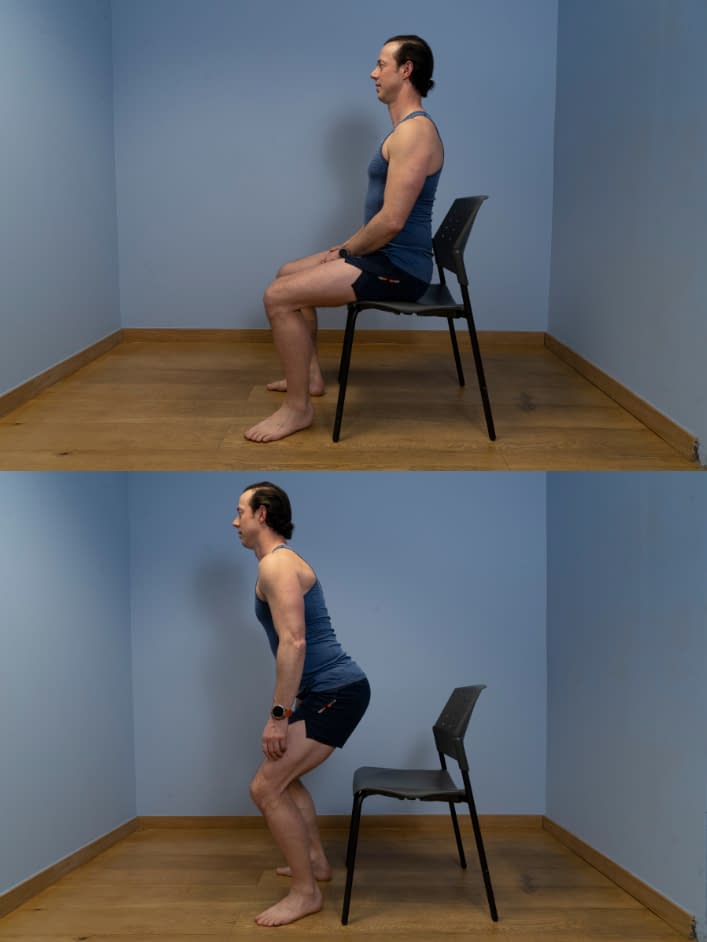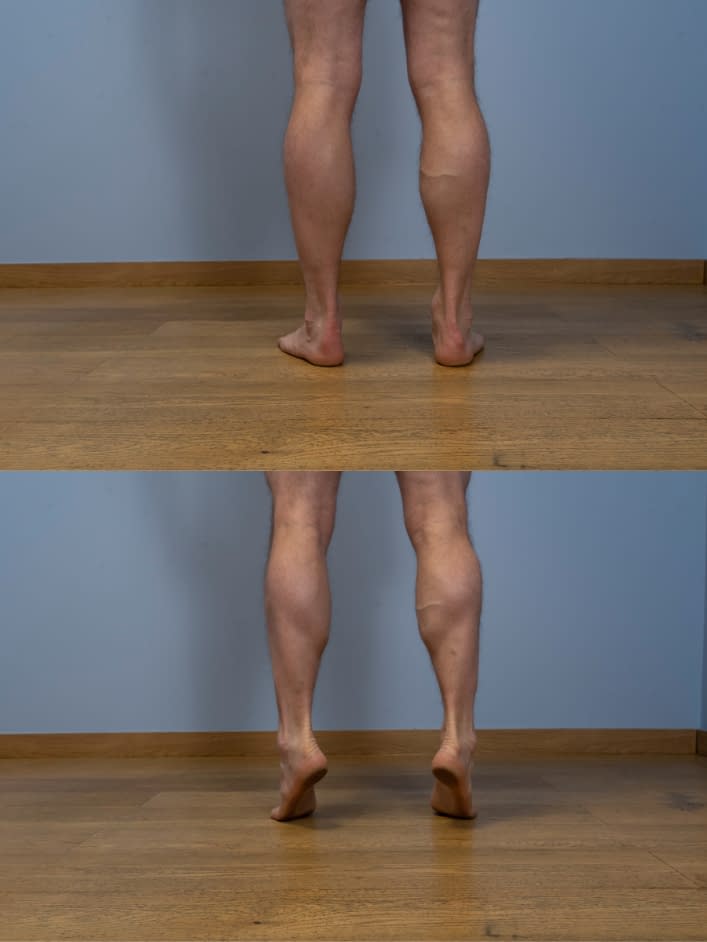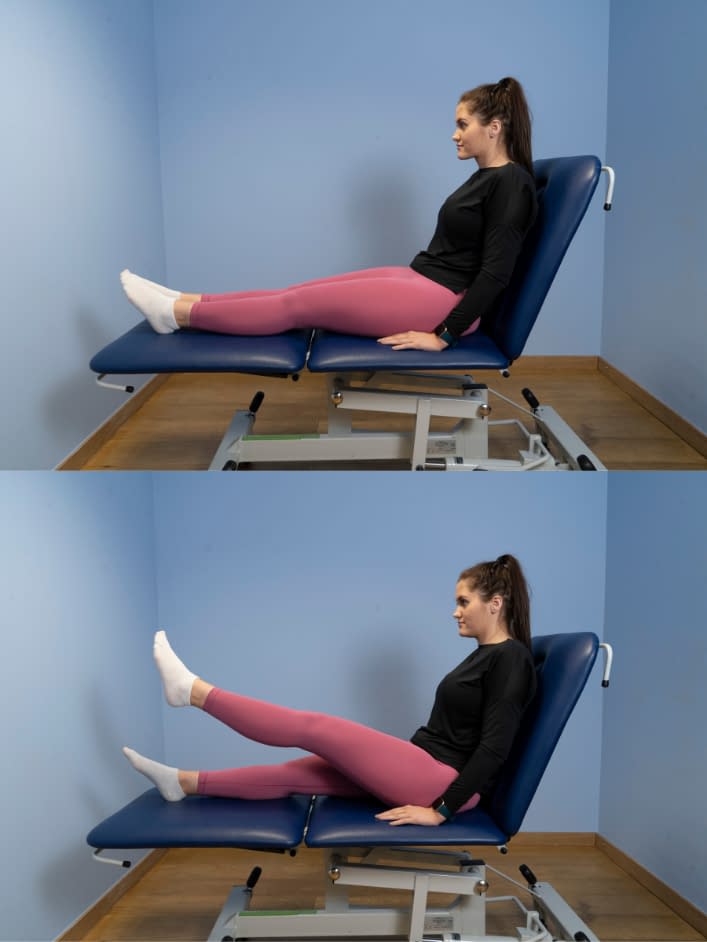Knee Replacement Surgery Intermediate Exercise Programme
Aim to perform this programme a minimum of once per day unless prescribed otherwise. As with any new exercise, start slowly (repetitions as able) and build up as you are able within the guidelines below.
Pain should not exceed 4/10 whilst completing this exercise programme.
1. Sit to stand
- Sit in a stable chair that is at a convenient height for you to rise from.
- Shuffle forward in the chair so that your feet are directly under your knees.
- In a controlled manner, initiate a standing motion by shifting your weight forward and pushing down through your feet.
- As you rise, transition to standing upright by pushing your hips forward.
- Then, slowly lower yourself back down towards the chair by pushing your hips backwards and controlling the movement using your thigh muscles.
- Gently touch your buttocks on the chair before repeating.
2. Double-leg heel raise
- Perform this exercise on a flat, non-slip surface ensuring you have something nearby to hold on to for balance/support.
- Stand upright with your feet hip-width apart.
- Squeeze your calf muscles by pushing down through the balls of your feet as if trying to make yourself as tall as possible.
- Hold at the top for a count of 3 seconds before slowly lowering the heels back down.
3. Straight leg raise
- Lay flat on your back or sit supported upright with the targeted leg out straight and the resting leg bent.
- Squeeze the muscles at the front of your thigh to push the knee straight.
- Maintain a straight knee whilst raising the whole leg up towards the ceiling.
- Hold at the top for 5 seconds and then slowly lower the leg back down and gently release the pressure.
We recommend consulting a musculoskeletal physiotherapist to ensure exercises are best suited to your recovery. If you are carrying out an exercise regime without consulting a healthcare professional, you do so at your own risk. If you have any concerns whilst completing these exercises, please contact a healthcare professional.
More Plans
The early plan is designed to provide you with some exercises to help increase movement and begin the process of getting the thigh muscles to re-engage. Pain should not exceed 3/10 on your self-perceived pain scale whilst completing this exercise programme.
- 0
- 1
- 2
- 3
- 4
- 5
- 6
- 7
- 8
- 910
In this plan, the exercises increase in difficulty as well as becoming more functional (whole-body) movements. Pain should not be any greater, but we would expect some increase in fatigue when performing these exercises Pain should not exceed 4/10 on your self-perceived pain scale whilst completing this exercise programme.
- 0
- 1
- 2
- 3
- 4
- 5
- 6
- 7
- 8
- 910


